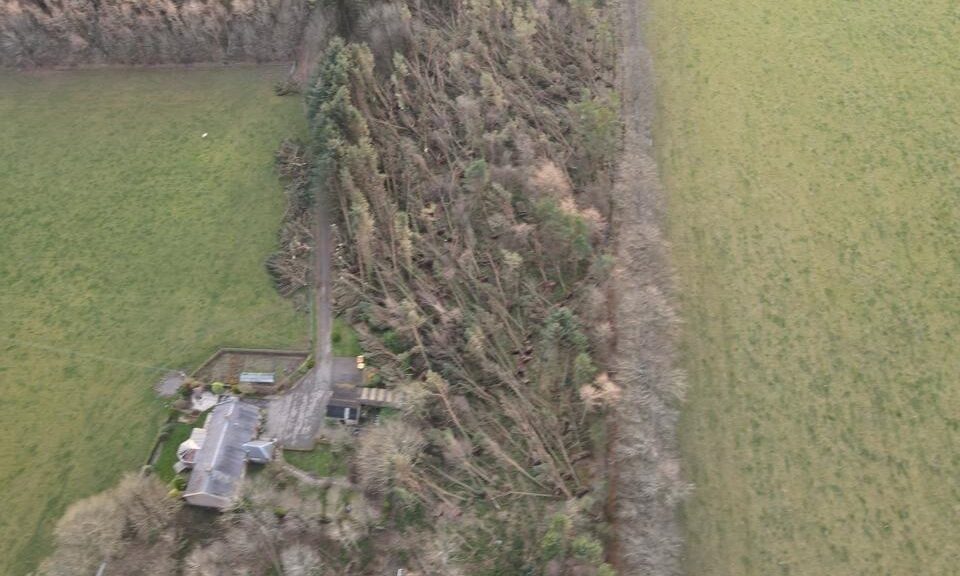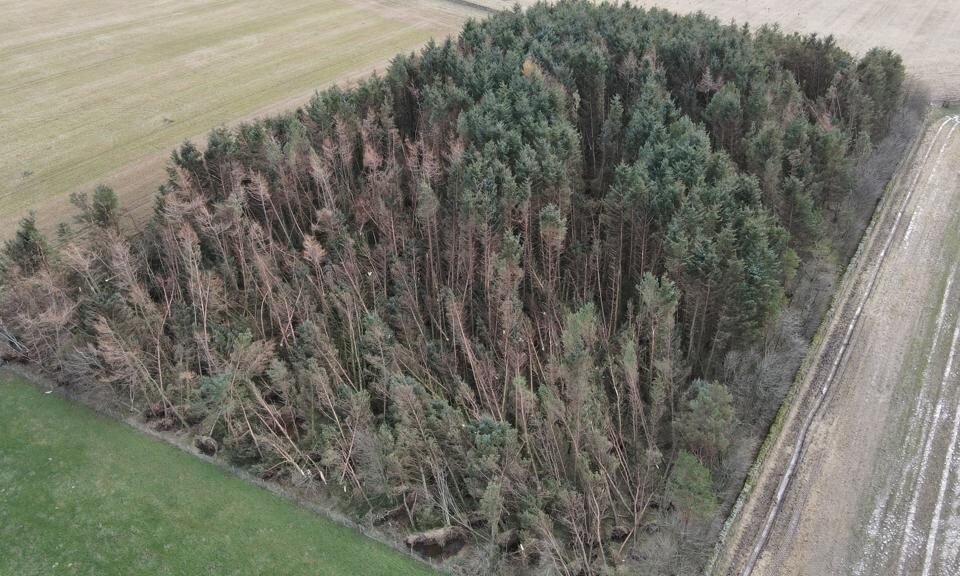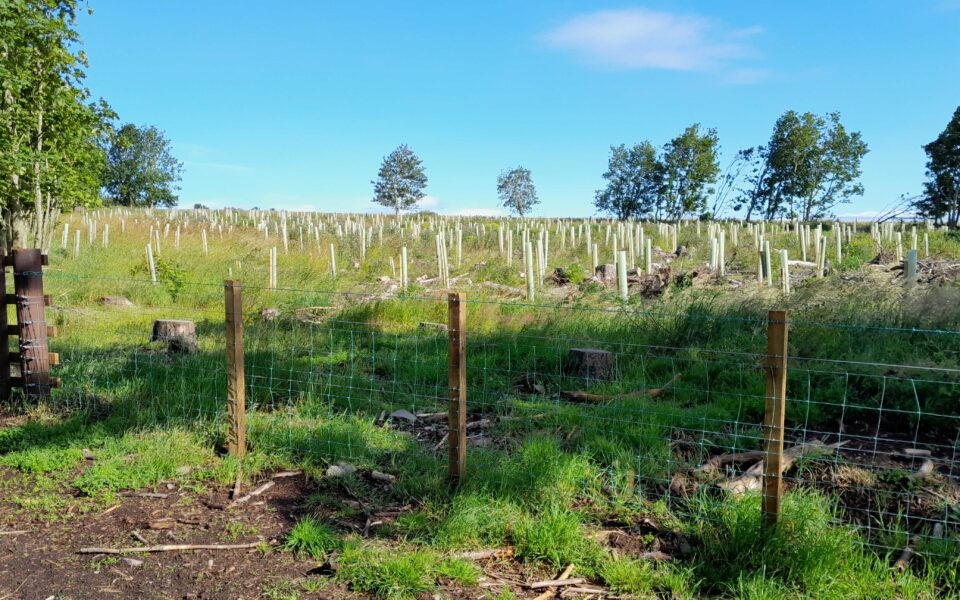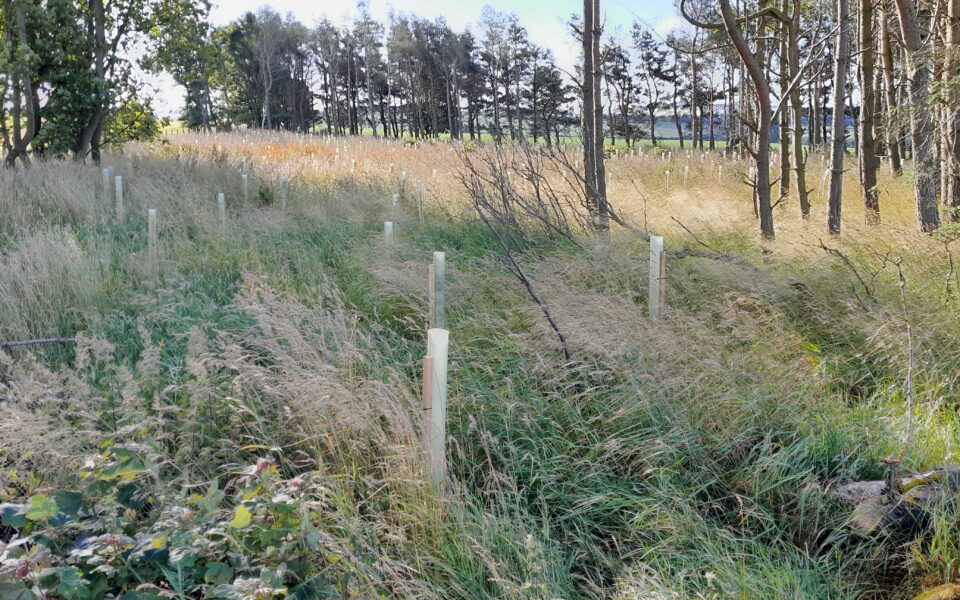Creating Diverse Farm Shelter Belts
“Arable farming takes away biodiversity from the landscape. I want to address that balance by planting diverse woodland which will also act as a shelter belt,” Berwickshire farmer, Ian Walker, after Storm Arwen in 2021 proved a pivotal moment.
Brothers Ian and Robert Walker took over the 486 hectare (1,200 acre) Blackburn Farm in Berwickshire about 30 years ago. They farm a mix of spring barley crops alongside cows and sheep. The farm stands at around 700ft above sea level and is on hilly terrain near the East coast, exposed to North Easterly winds.
When they bought the farm there were small areas of young Sitka spruce. Over the years there had been a few areas of windblow, but it was the damage caused by Storm Arwen that kick started a transformation of those areas.
The Dilemma


Above: Damage from Storm Arwen prompted a re-think of planting wooded areas
“I’m a farmer, not a forester, but I did not like the fact that nothing grew under the Sitka spruce. It would have been quicker and cheaper to replant with Sitka spruce but I wanted to add biodiversity to the area, ” Ian Walker.
Working with a local contractor, the brothers opted mainly for hardwood species mixes to replace the Sitka spruce brought down by the storm. They took inspiration from trees growing well locally and sourced from a local grower.
They successfully applied to the Grants for Resilient Woods Scheme for 6,420 trees planted in five small woodland areas totalling nearly 5 ha where Sitka spruce had been removed.
Species Choice and Planting Plan


Above: Woodland ares were planted with small groups of different species mixes
Three species mixes were agreed:
Mix 1 Mix 2 Mix 3
Beech Oak Silver birch
Downy birch Rowan Sycamore
Field maple Scot’s pine Wild cherry
Sessile oak
These were planted in early 2023 in small groups of each species. To protect against future windblow, shorter tree species are concentrated around the outside of each wood.
Each wooded area will act as shelter belts from the winds both for livestock and the crops. There is no expectation of a timber return. The aim is to sequester carbon, increase biodiversity and to benefit the landscape aesthetics.
Establishment
Each wooded area is enclosed. Fencing and tree guards have been used to protect against deer, with Roe the main threat. Grey squirrel numbers are low in the area, but there remains a challenge from badgers establishing setts.
As former spruce plantations, there is little competition from weeds, and there have been high survival rates of young trees following the first summer.
Connectivity
To increase biodiversity on the farm, Ian has also planted hedges – around 2.5km to date – to help connect the small areas of woodland.
Public Access
Two public rights of way cross the farm and skirt the woodlands. They are well used by local walkers.
More Information
If you are interested in learning more about this project, please email us at rfshq@rfs.org.uk
Grants for Resilient Woodlands
Our Grants for Resilient Woodlands are funded by Train Hugger and Green The UK. They are open for applications from RFS and Royal Scottish Forestry Society (RSFS) members all year round.
These grants are to help people plant trees that will survive and thrive into the future. Creating better, more resilient treescapes for our environment, for people and for the economy.



